Why Scientists Drag Dead Whales to the Bottom of the Sea
A fallen whale can fuel new life on the ocean floor.

It was a calm day on the Pacific Ocean. Perfect conditions for a sunset sailing cruise, or maybe a kayaking trip. But on April 11, 2007, scientists at the Monterey Bay Aquarium Research Institute (MBARI) had no time for such frivolity. Their mission? To plant a whale carcass on the bottom of the ocean, creating what microbiologists call a “whale fall.”
The scene was absurd. A deal had been struck between The Coast Guard/Department of Fish and Wildlife and the MBARI researchers: if they could seize a dead whale before it drifted too close to shore (removing a beached whale is, apparently, very difficult), then the researchers were free to use it for their own purposes. Eventually they got the call—dead whale, floating in the water, up for grabs.
Because of their size and propensity for landing in deep parts of the ocean, dead whales present unique experimental parameters for researchers. For the last couple of decades, scientists have been studying fallen whale carcasses and the surrounding seafloor ecosystems where they eventually settle. But the ocean is expansive; the odds of finding a whale fall are slim, so when scientists get the chance to create one for themselves, it’s not something to pass up. MBARI researchers have sunk five whales in the last 15 years, at different depths.
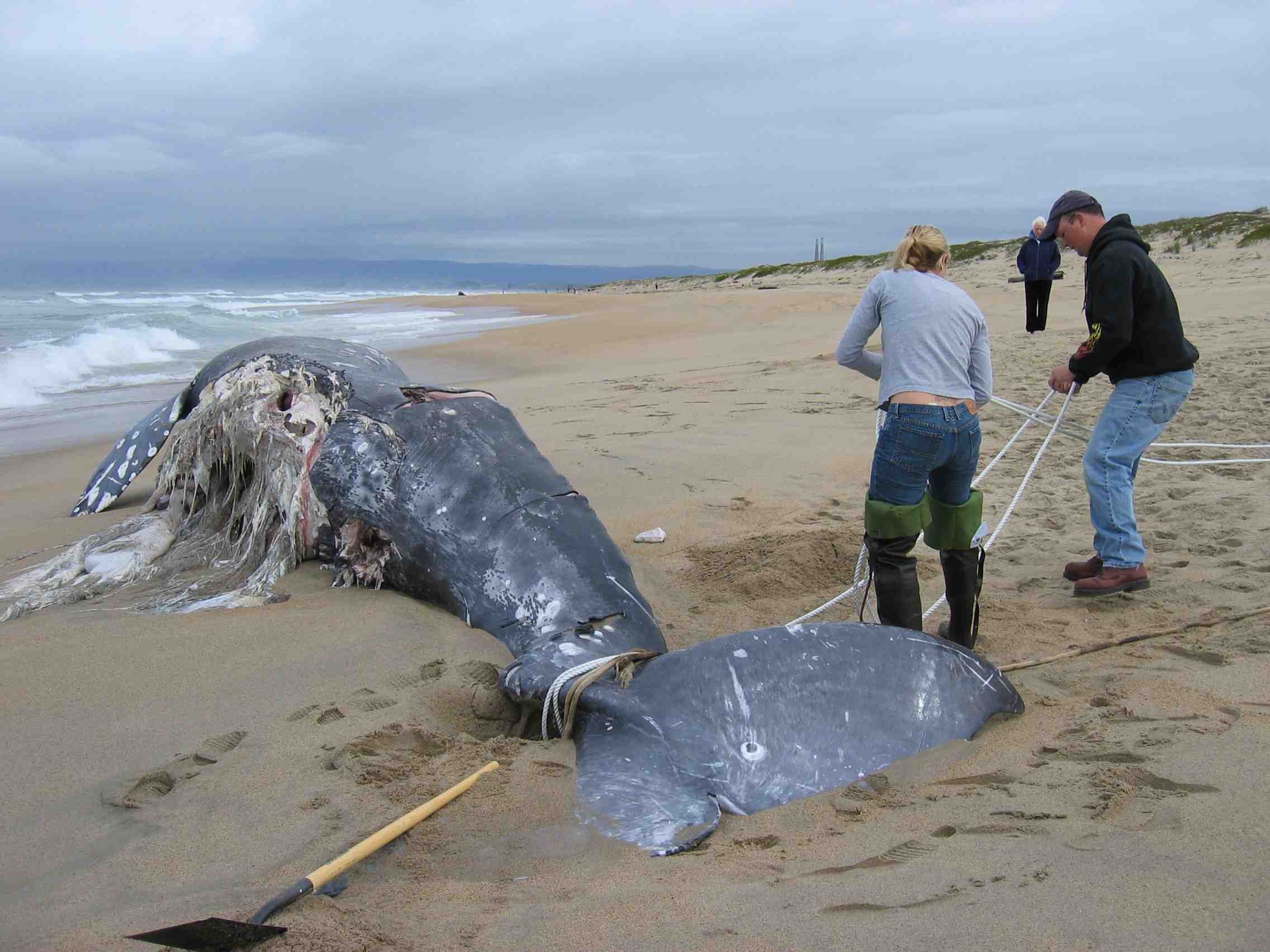
Above water, the majority of energy for all living things is created in the form of carbon, through the process of photosynthesis. Photosynthetic organisms (like plants) take in sunlight, and most animals get their energy secondhand by eating plants (or by eating animals that eat plants). But little, if any, sunlight penetrates the ocean with enough intensity to reach many of these sunken whale graves—without light, no carbon-containing organic molecules can be produced via photosynthesis.* So past a certain depth, there should be no life.
At least, that’s what the conventional wisdom said. That was before the discovery of extremophiles, organisms that dwell in the deep and rely upon their austere surroundings. Despite the dearth of carbon in these extreme environments, it is still generally the preferred food of extremophiles; hoping for a nutritious meal, these bacteria seek salvation from on high. Divine providence usually comes in the form of dead phytoplankton: microscopic, photosynthetic organisms that live near the ocean surface and sink to the bottom when they die (a phenomenon known as “marine snow”). But by the time phytoplankton reach the ocean floor, they retain very little in the way of organic carbon, having been picked over by other creatures living in the sea. For the sediment-bound microbes below, it’s a living off leftovers. That is, until a whale shows up.
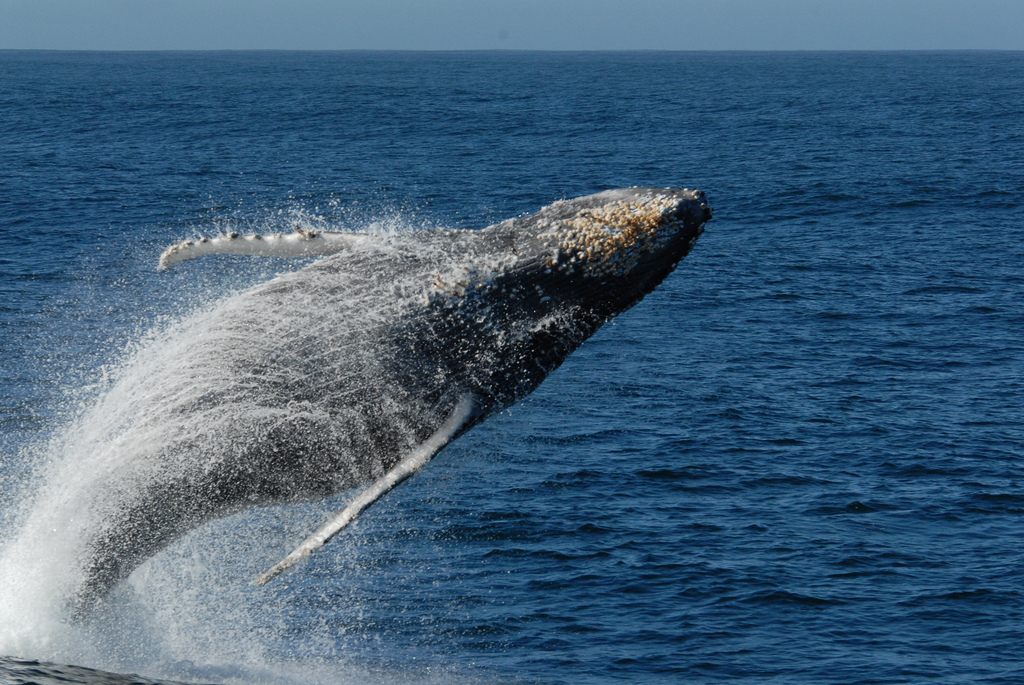
In 2007, the MBARI scientists, joined by microbiologist (and 2016 MacArthur Genius Grant recipient) Victoria Orphan, reached their whale before it had run aground and secured a line on its tail, dragging it back out into the open ocean. This particular whale, affectionately (and posthumously) named “Patrick,” unwittingly donated his body to science; you might say that Patrick became food for thought.
When a whale begins to decompose on the ocean’s surface, bacteria eat away at the fat, kickstarting the fermentation process. In the same way that yeast causes bread to rise by releasing air, these decomposers also release gas—but this gas has no way to escape, and remains trapped inside the whale, keeping it afloat. In order to sink the carcass, the scientists had to either release the gas, or fit the deceased with some, uh, nice new concrete shoes.
Lacking the materials to deflate a mound of blubber, they opted for the latter choice, attaching wheels from a train to the whale’s tail. Unfortunately, the makeshift anchor was not heavy enough to overcome the buoyancy of the entrapped gases. “It was this big dramatic thing. They pushed the anchor off and the whale bobs underneath and is hanging vertically in the water, just kind of sitting there,” Orphan says. “And everybody looks around; okay, well now what?”
The MBARI group went back to shore to gather more weight, attaching a GPS transponder to the whale so they could find it again. When the scientists returned to the site, they found their transponder gone and their whale nowhere in sight. They had misplaced the whale.
Luckily, they stumbled upon it six months later—by happenstance.
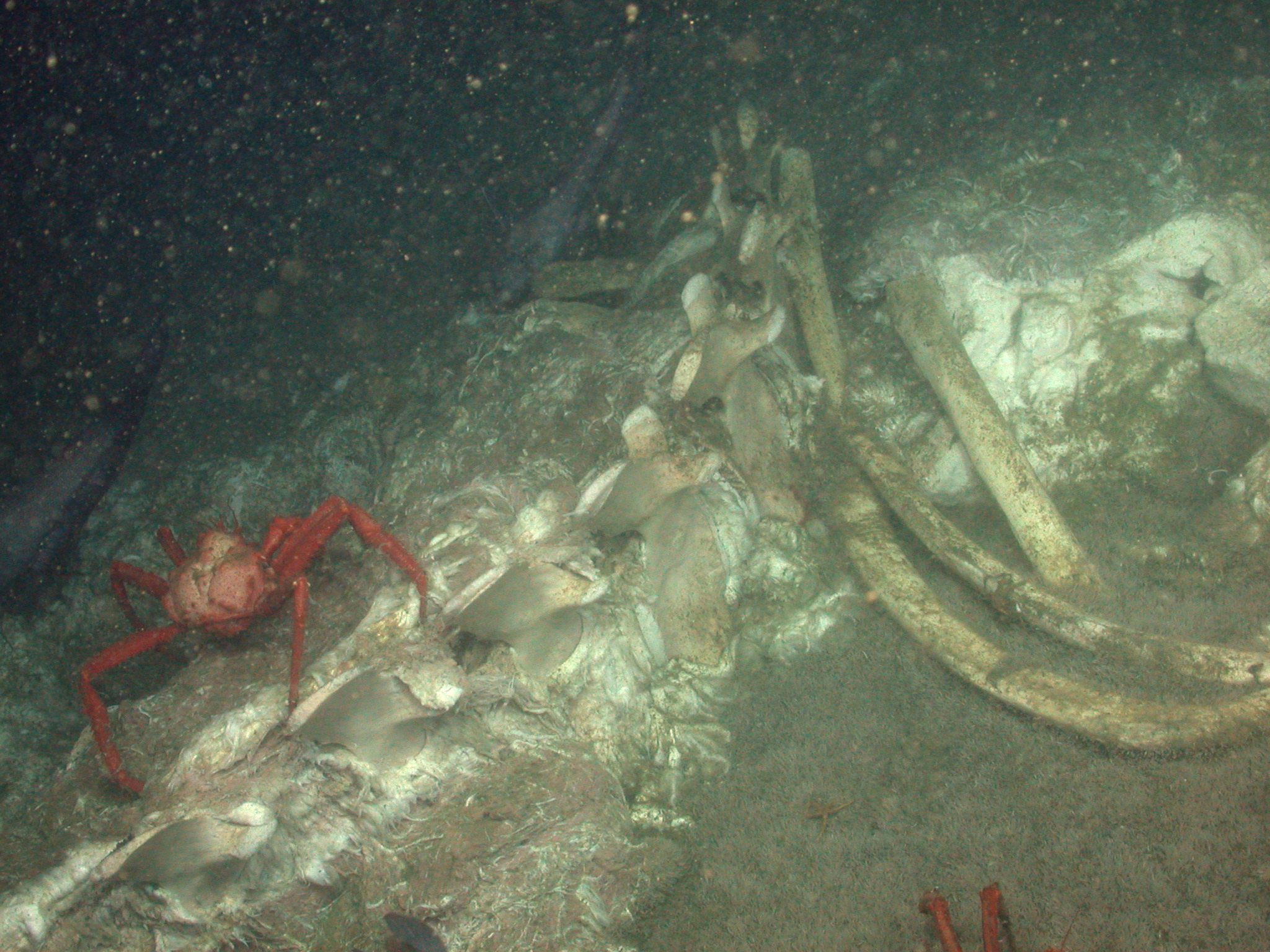
When a whale is laid to rest in such a nutrition-starved community, it disrupts the natural order, serving as a bountiful buffet for many sea dwellers. According to Orphan, “people have done calculations of it being equivalent to many years, maybe even hundreds of years, of marine snow, all concentrated in one area.” The fat and blubber are eaten by sharks and other large scavengers, and smaller organisms (such as starfish and sea cucumbers) join in until nothing remains but a skeleton.
While skeletons are generally associated with death, decay, and lifelessness, they are positive omens on the ocean floor. Like a rainy season precipitates a robust harvest, a whale fall means good eating for the extremophiles that live in seafloor sediment—it’s nothing short of a miracle. Larger creatures can’t digest bone, but some bacteria are perfectly suited for a skeletal diet. Eventually, the skeleton will be buried under sediment, and the microscopic bacteria that spend their lives eking out a famished living in the dark will flourish.
Imagine a Costco warehouse was dropped into the middle of an arid desert. Populations would explode, and people would flock to the new metropolitan scene: call it CostcOasis. And for some time, the surrounding area would be unrecognizable, teeming with life in a once barren ecosystem.
And like the epicenter of an earthquake, the magnitude of CostcOasis’s impact would radially decrease—there would be a flurry of activity inside the warehouse, less activity within a one mile radius, and less activity still within a 10-mile radius.
But the natural world always returns to its natural state. Sooner or later, CostcOasis would run out of jumbo bags of Brussels sprouts, beets and bananas. With all of the food eaten, human populations would either migrate away, or dwindle back to their initial, small numbers. These humans would have left waste behind, and secondary consumers would flock to the area—it would be a fly paradise, with insects and all sorts of vermin picking over food waste and human fecal matter.
It’s no different for a whale fall—given enough time, nature uses everything. It can take a while for the community to fully digest a whale, but eventually, all of the carbon will be consumed. The bacterial communities that exist on whale falls can survive for up to 100 years (maybe even longer); for this duration, life will flourish.
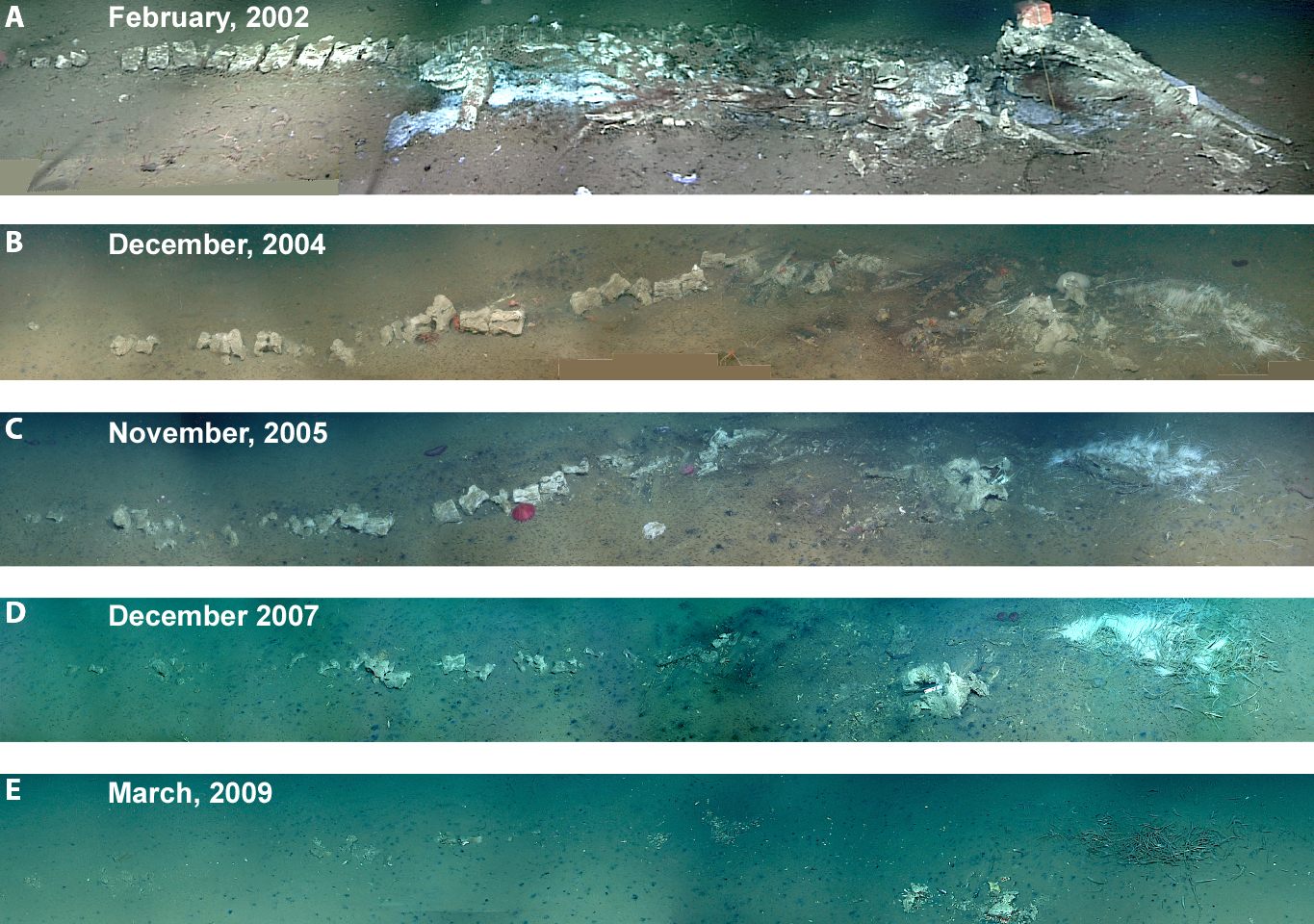
“It gives us insight, a speeded up movie of how organic carbon is processed,” Orphan says. “You have this additional advantage of knowing a ‘time zero,’ at least for the whales you put down there.” Researchers can observe the communities return to their baseline populations once all of the carbon has been extracted. This first happens at the epicenter, and gradually the surrounding communities, the whale fall suburbs, follow suit.
After he was laid to rest, Patrick was revisited by the MBARI team every few months, and an intensive longitudinal study of his corpse (along with the other sunken whales at disparate depths) followed this process. Over the past 10 years, scientists discovered new species of bone-eating worms and snails, and gained a better understanding of the alien environment that is the deep sea.
And while there is little of Patrick left, the sediment underneath his corpse is still paying dividends, providing the valuable extremophile bacteria samples that Orphan and other scientists use in their research.
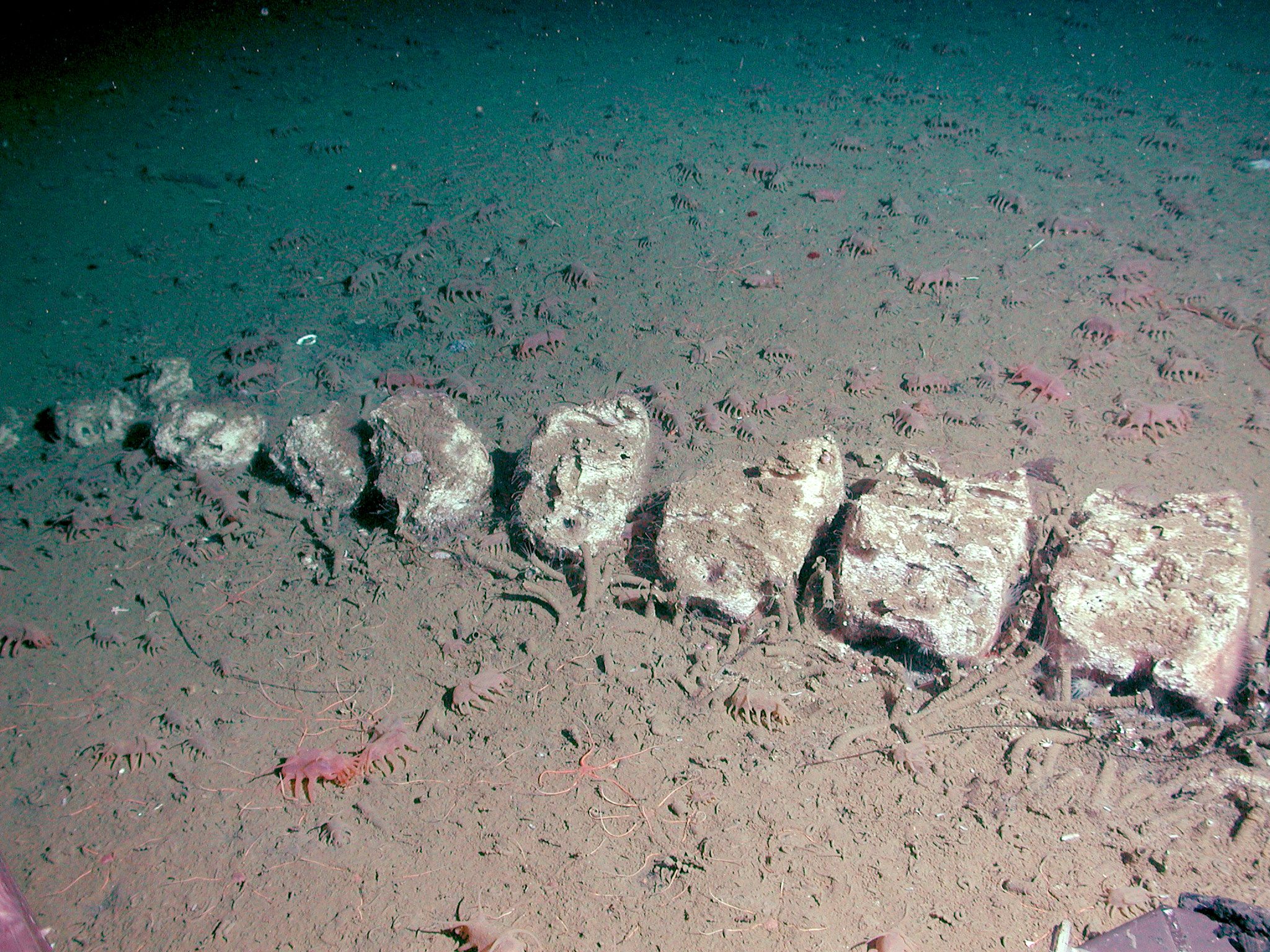
Bonita Lam, a researcher at the University of Southern California, uses these samples in her experiments on bacteria that “breathe rocks.” Breathing, to a microbiologist, refers to flow of electrons, not the intake of oxygen. In order to sustain their electron flow, all organisms need electron donors and electron acceptors—for most animals, this means receiving electrons from the glucose in food and passing them to the oxygen we inhale.
But extremophile bacteria live in oxygen-deficient ecosystems. To overcome this obstacle, they have adapted ways to use materials like methane gas and manganese rock as their electron acceptors. Whale fall samples help us learn more about these strange processes. The bacteria gathered from Patrick, for example, possess the strange ability to use a charged electrode as their electron donor—essentially, they can eat electricity.
A few decades ago, the scientific community didn’t think organisms could survive in the deep sea, let alone thrive. “It just shows how much we don’t know about these environments,” Orphan says.
On the surface, it may be a calm day on the Pacific; but don’t be surprised to find a frenzy of activity below. All you need is a dead whale, patience, and maybe some extra train wheels.
*Correction: The story originally stated that without light, no carbon can be produced via photosynthesis. It has been updated to reflect that carbon itself cannot be created.



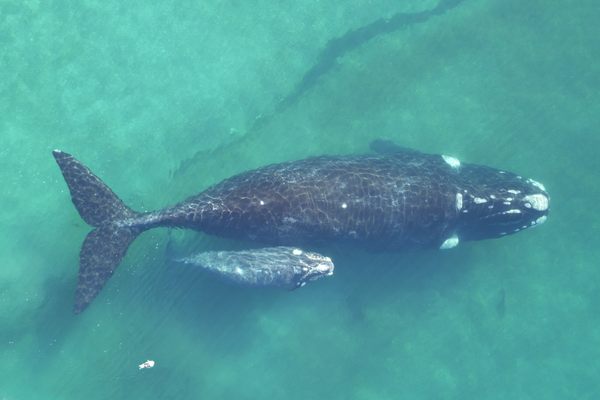





















Follow us on Twitter to get the latest on the world's hidden wonders.
Like us on Facebook to get the latest on the world's hidden wonders.
Follow us on Twitter Like us on Facebook